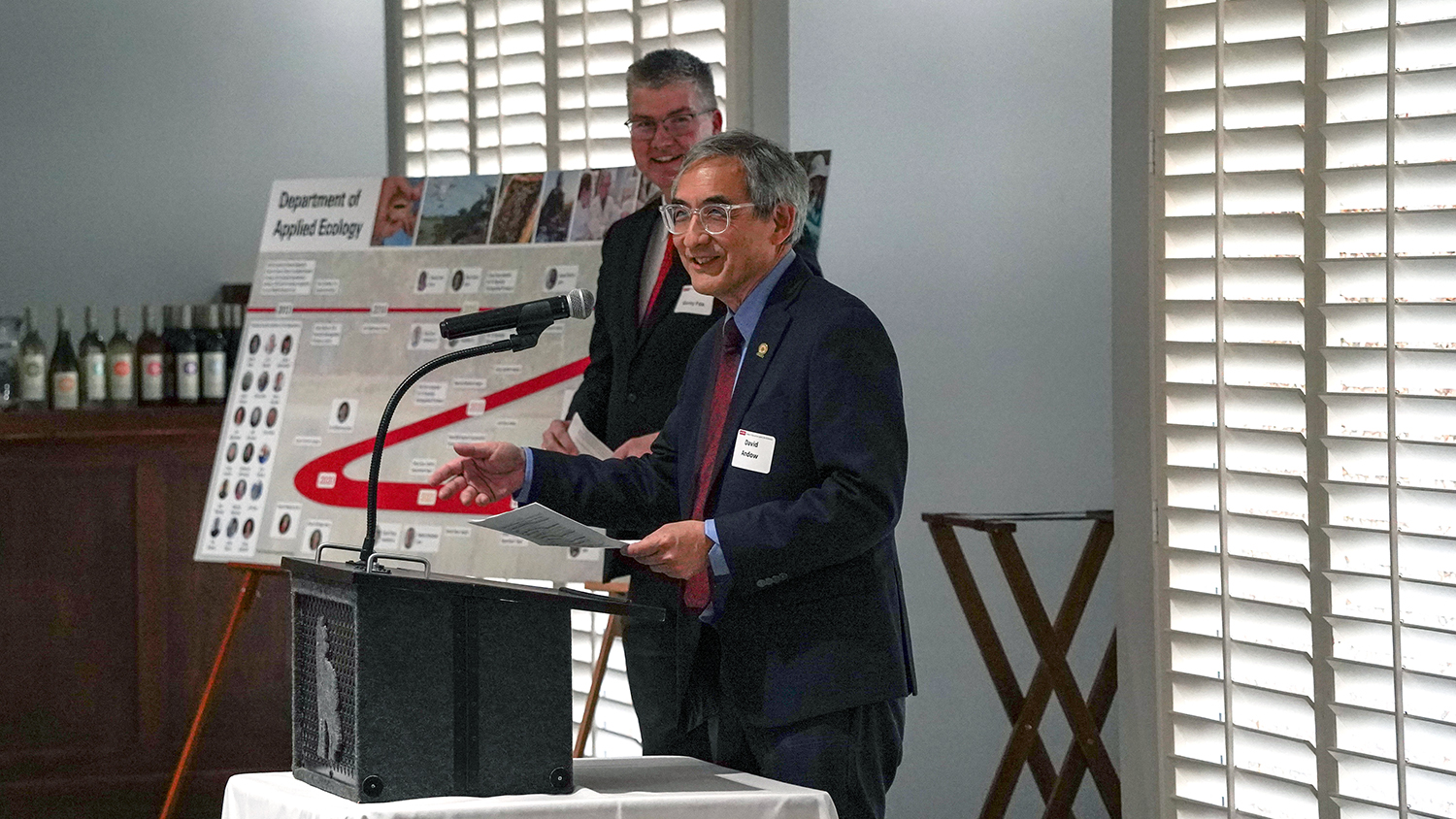Student Perspectives: Diane Silcox
National award-winning Ph.D. student Diane Silcox is developing biological solutions with economic savings for managing damage from the hunting billbug, a relatively new pest in North Carolina’s warm-season turf.
Transcript:
The hunting billbug is a weevil pest, so it’s a small beetle. It’s traditionally been a pest in cooler areas, and what’s interesting about my work in North Carolina is that this is on warm-season turf, and it is primarily the hunting billbug causing the damage.
So we have an apparent host shift. We oftentimes will see insects moving from warmer climates to cooler, presumably as the atmosphere is warming up. But now we have that opposite trend, where an insect that traditionally has been in cooler climates taking advantage of resources in the warmer climate. And then with that change, we have seen an increase in damage, primarily from the adult stage, whereas we were seeing a primary larval feeding in the cool-season turf.
So it’s a really great ecology project, biology project, and it really centralizes on agriculture’s theme of biological solutions with economic savings.
My name is Diane Silcox, and I’m working on my Ph.D. in the Department of Entomology at North Carolina State University. We have one of the best turf programs in the nation and one of the best entomology programs in the nation, so that’s pretty easy math in my book.
The Watson Fellowship is through the Golf Course Superintendents Association of America and the Environmental Institute for Golf. It’s sponsored by Toro Co. It was an honor that we were selected (by) the person who is actually the namesake for the award.
My research is looking at the biology and ecology of the hunting billbug, primarily looking at what part of the plant that they are feeding on. This becomes very important in looking at systemic insecticides that are taken up by the plant and then the insect has to feed on the particular part of the plant that the insecticide is located, and if they are not feeding on that part, then it’s not a very useful control measure. Secondly, we have been looking at how soil moisture affects their development. And then lastly, of course, looking at insecticide efficacy, both synthetic insecticides and a naturally occurring fungus, to give turf managers a variety of options.
My career goals are pretty wide open right now, but I would like to stay in doing research. I think it keeps you young and on the cutting edge.


